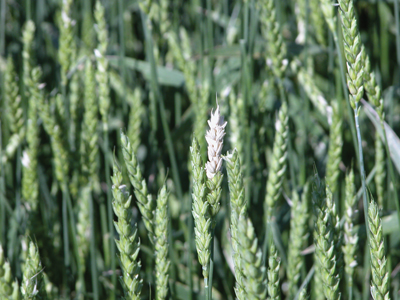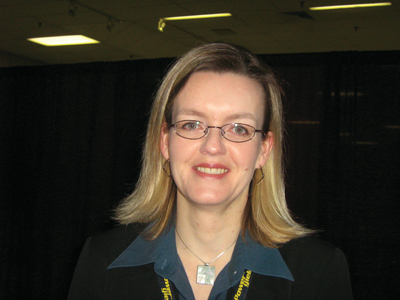
Features
Production
Research
Cereal fusarium making the leap into potatoes
April 30, 2009 By Myron Love
Although Fusarium sambucinum remains the most common form of the fungus that causes dry rot in potatoes, F. graminearum – a species of fusarium commonly found in cereal crops – has been identified in potatoes.

|
Although Fusarium sambucinum remains the most common form of the fungus that causes dry rot in potatoes, F. graminearum – a species of fusarium commonly found in cereal crops – has been identified in potatoes.
Addressing Manitoba potato growers during the recent Manitoba Potato Production Days Seminar and Trade Show, Dr. Tracy Shinners-Carnelley reported that F. graminearum was documented for the first time last year in potatoes grown in Manitoba, Quebec and New Brunswick. In Manitoba, F. graminearum accounted for eight per cent of samples surveyed compared to F. sambucinum, which was identified as the fungus in 56 per cent of provincial fusarium diagnoses in potatoes. The presence of F. graminareum in potatoes may come from crop rotation practices, suggested Dr. Shinners-Carnelley, referring to Dr. Rick Peters’ findings in P.E.I.

|
|
| Dr. Tracy Shinners-Carnelley
|
Dr. Shinners-Carnelley’s presentation focused on seed piece decay and management of fungicide-resistant fusarium. In her talk, she referred frequently to research conducted by Dr. Peters, a plant pathologist with Agriculture and Agri-Food Canada (AAFC) based in Charlottetown, P.E.I.
The external signs of fusarium, Dr. Shinners-Carnelley noted, are shrinking and shriveling of lesions. Cutting inside the potato, the grower will notice mycelium-filled cavities and light to dark brown rot.
“Seed piece decay occurs in storage as well,” she said. “The inoculum spreads during seed cutting and handling early in the year. The infection occurs in wounds and infected seeds can infest the soil where the fungus can survive for many years.”
The amount of dry rot in seed is not a good indicator of the amount of dry rot you will see in the overall harvested crop, Dr. Shinners-Carnelley added. The determining factor is in the amount of wounding.
Turning to the matter of fungicide resistance to chemicals, the first case of resistance to thiophanate-methyl (TPM), Dr. Shinners-Carnelley said, occured in the mid 1990s. In the past five years, she noted, Dr. Peters has found most isolates of F. sambucinum continue to be resistant to TBZ (THiabedazole) and TPM, however some sensitive isolates have been recovered in Manitoba.
She cited a recent Manitoba survey that found two out of 10 samples of F. sambucinum were resistant to both TPM and fludioxonil (Maxim). She reported that fludioxonil (Maxim) resistance has also been documented in other provinces.
Dr. Shinners-Carnelley suggested growers use resistance management strategies when selecting seed piece treatments. She also recommended using clean seeds stored in a disinfected facility.
“You should warm your seed tubers to 10 Celsius before cutting and handling them to minimize injury and promote growth and remove diseased tubers before cutting them,” she said. “And don’t store them for more than 10 days.”
Print this page